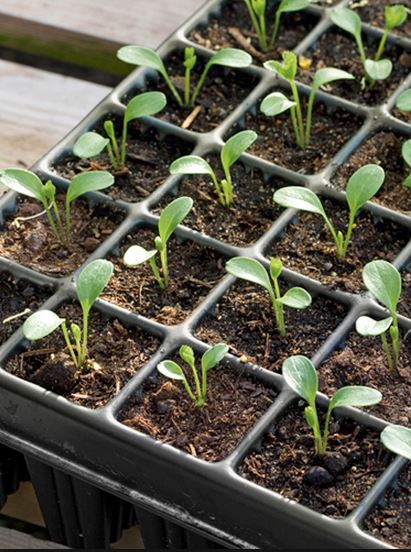Growing plants from seeds is fun and rewarding. Starting seeds indoors helps you grow plants early. It also gives plants a better start before moving outside. This guide will help you learn how to start seeds indoors easily.
Why Start Seeds Indoors?
There are many good reasons to start seeds indoors.
- Early Start: You can grow plants before the weather is warm.
- Better Control: You can control light, water, and temperature.
- More Choices: You can grow plants not sold as seedlings in stores.
- Save Money: Seeds cost less than buying plants.
What You Need to Start Seeds Indoors
Before you start, gather these simple items:
| Item | Purpose |
|---|---|
| Seed trays or small pots | Hold soil and seeds |
| Seed starting soil mix | Light soil that holds water well |
| Seeds | Choose plants you want to grow |
| Water spray bottle | Gently water seeds without washing them away |
| Light source | Help seedlings grow strong (sunlight or grow lights) |
| Plastic cover or clear lid (optional) | Keep moisture in to help seeds sprout |
Step 1: Choose the Right Seeds
Not all seeds grow well indoors. Pick seeds that do well inside first. Some good choices are:
- Tomatoes
- Peppers
- Basil
- Lettuce
- Marigolds
Check the seed packet for planting instructions. It tells you when to start seeds indoors.

Credit: www.reddit.com
Step 2: Prepare the Containers
Fill your seed trays or pots with seed starting soil. Do not use garden soil. It is too heavy and may have bugs.
Fill the container almost to the top. Gently press the soil to remove big air pockets. But do not pack it hard.
Step 3: Plant the Seeds
Look at the seed packet for planting depth. Usually, seeds need to be planted 2 to 3 times deeper than their size.
Make small holes in the soil with your finger or a pencil. Drop one or two seeds in each hole.
Cover seeds lightly with soil. Do not press hard.
Step 4: Water the Seeds
Use a spray bottle to moisten the soil gently. The soil should be damp, not soaked.
If you cover your seeds with a clear plastic lid, keep it on until seeds sprout. This keeps moisture inside.
Step 5: Give Seeds Light and Warmth
Seeds need warmth to sprout. Most seeds like 65 to 75°F (18 to 24°C).
Place containers in a warm spot. A sunny window or a heating mat works well.
Once seeds sprout, they need light. Without enough light, seedlings become tall and weak.
If you don’t have enough sun, use a grow light. Keep lights about 2 to 4 inches above seedlings.
Step 6: Care for Seedlings
When seedlings appear, remove the plastic cover if you used one. They need air now.
Keep soil moist but not wet. Water gently every day or when soil feels dry.
Turn seedlings daily if they lean toward light. This helps them grow straight.
Step 7: Thin Seedlings
When seedlings grow their first true leaves, thin them. This means removing the weaker ones.
Keep the strongest seedling in each pot or space. This gives it room to grow big.
Step 8: Harden Off Seedlings
Before planting seedlings outside, you must harden them off.
Hardening off means slowly getting plants used to outside weather.
Start by placing seedlings outside for a few hours in shade. Do this for 3 to 7 days.
Gradually increase time and sunlight each day. This prevents shock when planting outdoors.
Common Mistakes to Avoid
- Planting too deep: Seeds may not sprout if too deep.
- Overwatering: Too much water causes mold or rotting.
- Not enough light: Seedlings grow tall and weak.
- Skipping hardening off: Plants may die when moved outside.
Tips for Success
- Label your seed trays with seed names and dates.
- Keep soil moist but not wet.
- Use clean containers to avoid disease.
- Provide plenty of light once seeds sprout.
- Be patient. Some seeds take longer to sprout.
What Plants Are Best to Start Indoors?
Here is a quick table of common plants to start indoors and their indoor start time.
| Plant | Days Before Last Frost to Start Indoors |
|---|---|
| Tomatoes | 6 to 8 weeks |
| Peppers | 8 to 10 weeks |
| Basil | 6 to 8 weeks |
| Lettuce | 4 to 6 weeks |
| Marigolds | 6 to 8 weeks |

Credit: savvygardening.com
Final Thoughts
Starting seeds indoors is a great way to grow plants early. It helps you save money and choose many plant types. Follow simple steps and care for your seedlings well.
Remember, every gardener learns by trying. If your seeds don’t sprout the first time, try again. Growing plants indoors is fun and brings joy.
Frequently Asked Questions
What Is The Best Time To Start Seeds Indoors?
Start seeds 6-8 weeks before the last frost date. This gives them a strong start.
Which Seeds Are Easiest To Start Indoors?
Tomatoes, peppers, and herbs like basil are easy. They sprout quickly and grow well.
How Do I Choose The Right Seed Starting Mix?
Use a sterile, lightweight mix. It helps seeds germinate and prevents disease.
Do Seeds Need Light To Germinate Indoors?
Most seeds don’t need light to germinate. Once they sprout, they need light to grow.
5 min read

